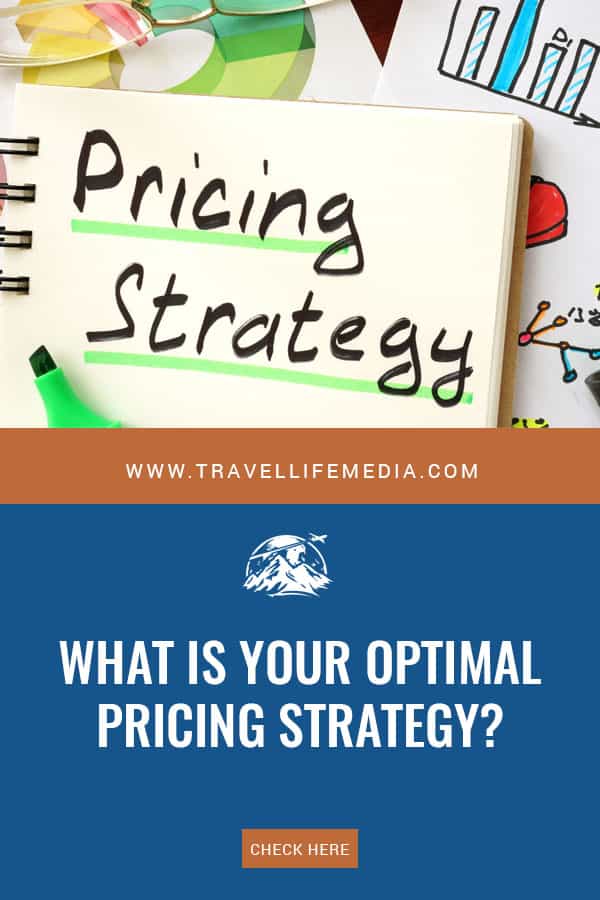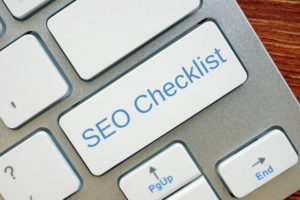Setting your price for tourism products and services will be one of the hardest decisions you will make. If you don’t have a pricing strategy maybe this happens to you:- You’ve felt like you put some work into your price, then you land on a number that “sounds right” because it loosely translates into a price point that doesn’t seem too big – so maybe travelers will pay for it? – Or perhaps, you developed your price looking at the market – you look at what your competitors are charging, and you figure out if you are better or worse, which results in charging more or less than them.
You are not alone; even established services like yours take these approaches too. But there is a better way. In part 1 of this series, we reviewed the 12 pricing problems and how to avoid them- key areas that are common pricing mistakes that will stop you from pricing your products objectively. If you are working on your own pricing journey, start here.However, reviewing pricing problems doesn’t help you set your price specifically; it gives you guardrails to follow. Your next step is to follow a pricing strategy every time you set price.
Here in part 2 of our pricing series, we cover your pricing strategy and pricing methods to arrive at your optimal price. A system you can follow every time, and gives you confidence in what you charge.
A pricing strategy is:
•Your approach or method you take when setting your price. •Following a set of rules, so your prices are consistent for your brand.•An approach that explains what your pricing is on paper, not in your head.•The price points that determine where you are positioned in the marketplace for your regular prices and your promotional prices.
Why bother with setting a pricing strategy?
When you have a pricing strategy – and write it out in words – it stops you from straying away from reality and creating “knee jerk” prices. This is easy to do in a competitive environment when we feel pressured to respond. This approach is 100% relevant to all industries, for any products, including tourism.
For example: Have you ever asked yourself this question: “I worked out all my costs and my breakeven point, now what? How much higher should I price my products/services above that? Or “The competitor just dropped their price; I need to react!” What should I do? -A funny thing happens when we write out your pricing strategy in words – it keeps us committed to a process and a structure, rather than blindly pricing our products when fear and uncertainty prevail.
Pricing Strategies to price your tourism products or services
There are four pricing methods to help guide you through your overall pricing decisions. Let’s review these to help you decide which pricing strategy is best for you:
1.Market-Based pricing
Is the pricing method where you look externally and only at your competitors to decide whether your brand is better or worse than theirs. Therefore you set your price higher or lower, based on that decision. Because this is externally focused and you do not look at any other factors in your own business like your finances, this is not a good strategy. It causes a lot of stress on your business. If you see your competitor dropping their price, you feel compelled to follow – and you have no idea if they have a stronger financial position, or if their costs are significantly lower to do this. Most importantly, in this strategy, you are not considering your monetary position– which could lead to financial ruin. HOWEVER, use this strategy for CONTEXT, NOT for your pricing strategyCompetitive pricing is useful to understand where you are positioned in the marketplace, based on where your competitors are. And it helps you explain what your pricing strategy is. For example: You own a small hotel/accommodation.If you are economy-priced; positioned on the low end of the market, then you need to deliver high volume as efficiently as possible. And, of course, your target audience will be more price-conscious consumers.
– If you are standard price –you are more “middle of the road” in pricing against your competitors. This means that your marketing has to work hard to differentiate your business in a crowded marketplace. How are you going to do that? – If your pricing is premium– higher end priced, this strategy will impact your positioning, the quality of your services, and the kind of clients you will attract.
Here are some better options to set your price points:
2.Goal-Based Pricing
This type of pricing method is where you work out what you need to charge to pay all your bills and pay yourself a reasonable salary. You look at your targeted dollar sales goals and work backward to come up with a price point. This kind of pricing is useful for tourism businesses that: -Have a simple business model, and they have a limited number of services. -Are new businesses because when starting out, it’s easy to price too low in the beginning. It stops the ‘insanity’ of pricing too low early on, which is how many new businesses fail. -Desire to do a reality check mid-year or end of year to see if they will reach their targeted dollar goals. -It is extremely beneficial to put a value in their pricing – because costs aren’t the only factor to look at when setting a price. This type of pricing strategy isn’t perfect though, because it doesn’t:Cost all your different services/and products – you will still need to work through all those charges individually.
Two other pricing methods are better options for your business:
3. Cost-Based Pricing
This is what we call bottom-up pricing planning, and it is the best way to start all of your price setting for every product/or service.PLEASE Don’t STOP HERE at cost-based pricing – because this is just the MINIMUM you need to charge to cover your costs and pay yourself. Cost-based pricing is perfect for tourism brands with many products – like tour operators and hotels and even transport services. Analyze your cost-based pricing and then maximize your price.Continue reading on how you can maximize your pricing.
4.Value-Based Pricing
This strategy is the gold star of pricing your tourism services because it doesn’t just look at the time and costs it takes to deliver your service/product. It also includes the value you provide to your guests – by how valuable it is to THEM. E.g., A rafting tour company that uses this pricing strategy doesn’t just factor in costs to run a rafting tour. It includes the staff costs, the security and safety of the tour AND it also includes the value they provide to their guests – and how it is valuable to them. This structure also takes out the challenge that many small businesses face with feeling:
“My business is worth $x,
so I am worth $x.”
So instead of pricing emotionally, you price objectively.
BUT if you flip your point of view and place a value that you provide to your guests – how you make them FEEL and the transformation your service provides, (because there is a value attached to that) it helps you price beyond just covering your costs.
E.g., This same rafting company gives VALUE to their guest beyond just the experience. They gave their guests a chance to experience a thrill of a lifetime, made people feel energized, invigorated, to feel safe, to try something they have never done before. They helped their guest push personal boundaries, learn a new skill, and travel to a location they would never be able to see on their own. All of these feelings – created immense value for the traveler, which are WORTH paying money for.
PRICING IS A PERCEPTION – what the guest perceives as value to them.
The same goes for accommodations. You bring value not just to the features of your rooms, you give value on your quality customer service, safety, security, comfort, convenience, and how you make a person feel from the first time you connect with them, to when they leave your lodging. Value-based pricing – takes out the fear and insecurity of pricing, because we sometimes set price based on what we think WE are worth, instead of a rational approach to pricing. I explain this idea about emotional pricing in this video.Perhaps you are thinking right now, “But I just provide rooms to stay in a hotel, or a simple walking tour, or airport transfer”. “How can I possibly be transforming someone’s life?” Here’s the point – there is a VALUE to your services beyond just covering your costs, and if you communicate that value effectively in your marketing, you can convince a traveler to pay your rates.So, if cost-based pricing is the minimum you should charge for your service, then value-based is the maximum before your client is no longer getting value for money.
What is your Tourism Pricing Strategy Sweet Spot?
Your best pricing strategy is: between cost-based pricing and value-based pricing. Meaning, your price should be a range between the minimum you can charge to pay all of your expenses and the salary you pay yourself, AND the maximum you can charge to your clients that they don’t see that they are getting value for their money. -When you have a range of pricing– you can charge anything within this range, where you are confident and comfortable with between these numbers. -This is the range you can use to test your pricing with your guests. You can also charge the minimum within this range to start, and move up your prices in this range over time.
How to set your pricing strategy
STEP 1: Always start with your costs. You must cover your expenses, no exceptions.This is the cost-based pricing approach – Review all your costs – this includes:Fixed costs: Costs that you need to pay no matter how many guests you host – Such as salaries, permits, and vehicle payments.Variable Costs: The costs that change depending on how many guests you host. Such as cleaning of room linens or entrance fees.The costs often missed: Commissions- What you pay to online travel agents (OTAs), retail travel agents, destination management companies, travel agents, wholesalers. Anyone who is a partner that you pay a % commission to work with them.For tips and worksheets on how to do this, review #5 of this tourism pricing problems article. Don’t stop at just the cost price – because this doesn’t take into consideration the value of your product/service for your guests, because they are of value, right? If you only price for cost – you are pricing your products too low. Don’t create a cost-plus price either– Meaning, adding a % markup to your costs, is pricing blindly without considering the other factors to make the most viable price point. This is a common approach, and I understand why companies do this, but it’s worth looking at your value pricing more rationally.Step 2: Add in your value over and above your pricing Look at your price from a value-based pricing approach now. Look at value factors and evaluate them. Work with a colleague, a business partner or team to gain an objective opinion. then you need to get feedback from your target audience and past guests. Remember those are the guys that are the ones evaluating your value.Meaning: What value is your brand in the marketplace to your potential guest? How do I figure out my value? In an ideal world, you would complete extensive customer, market and pricing research to come up with your ideal price. Most of us won’t have those kinds of resources to do so, so let’s try this another way.
Here we assess the value you bring to your guests; this isn’t a calculation and its not quantitative like cost calculations. Instead it’s a qualitative number and a range you can work with to access your value.
Rate the following factors for your business based on a 1-5 scale. 1 is low and five is high. 1. Demand – Is there a high, medium, or low demand for my type of product/service? If there is high demand, it gives me an opportunity to differentiate my price more (higher) vs. low demand? Would you rate this low, medium, or high for your offering? 2.Differentiation – How unique is my product/service vs. the others out there? This means uniquely different in type. The more unique/differentiated, the less price-sensitive and gives you more reign on price. Again rate this low, medium, high.3.Consumer proposition– Would you consider yourself a luxury, premium, standard, or economy brand? Based on the quality of your products/services, the investment you put into your business, and the types of clients you attract to your company? Brands that are considered of higher quality are priced higher, where generally, would you (and your past clients) position your brand? 4. Your brand equity/Your brand value – Do you have an established brand name and a trusted brand that has been around for many years? Rate this from a scale of 1-5 5. Reviews and surveys – Are a great way to help you understand your guest’s perceptions of your business – and the perceived value you bring to them. (If you don’t ask your target audience, you are only guessing)
Now that you have looked at these factors, this is where you set a range of pricing: Cost + minimum value range and maximum value range. Look at your scale – 1-5 and add a relative price point for each number, a minimum price, and a maximum price range. Your number is rather arbitrary and qualitative at this point (but you have to start somewhere).
For example, you have a hotel room at $80/night (after you factored in your costs) – now, what could be some incremental price increases you could make based on your value?
Set a price for each of your price ranges. Again, this is not going to precise or scientific. It is a starting point to get you thinking that value is a factor in your price over and above your costs.
Step 3- Look at the Market – As a GUIDELINERemember the Market based strategy above? We didn’t use it as our strategy, instead we are now looking at it as a guideline. Rank where you are vs. your competition on the five factors above – Demand, Differentiation, Consumer Proposition, Your Brand Equity, and Reviews/Surveys. What rating would you place them vs. yours? Be objective and get other opinions. Now, look at their price points vs. the pricing you developed for your brand. Where do you sit relative to their position? Does your rating scale look reasonable based on your understanding of the market?
Important point – the point here is not to match your competitor or price the same; it’s to understand the market conditions, which doesn’t necessarily reflect what guests are willing to pay.
However, if you price your services significantly higher or lower than your competitors – it will force you to ask yourself:
1. Can I justify it with the value I provide to them?
2. And have I communicated it effectively in my marketing to my future guests?
Other factors to setting your price
Of course, one price doesn’t suit all your products or services, and you must vary your price points on your offerings to maximize your profitability. Pricing strategies are frameworks – and then you can build in variations.
Other factors to reflect in your pricing include: Dynamic pricing: Pricing your products/services differently in high and low season is essential. It helps sell when demand is low and take advantage of incremental profitability when demand is high. If you aren’t doing this now, please consider it, and look at what software can help you manage this. Dynamic pricing is necessary for the hotel industry. Here is a great resource to learn more about effective hotel price points. Promotional pricing: This is not a dirty word – Promotions can introduce new customers to your business, gain incremental profitability, and survive in competitive markets. Do consider what value-added offerings you can promote, or bundles, rather than dropping price significantly. When you have a range in mind – (based on your value as above), you can decide how high or low you can go.
Step 4: Analyze and Get Feedback on Your Pricing
Pricing should be a fluid and ongoing discussion in your business. Paying attention to the market is one thing, and so is getting feedback from your guests. Surveys to past guests, and a quick question to consumers who didn’t book is an excellent way to understand if pricing is a factor in their decision to book or not. When you evaluate your pricing, Please ask yourself, was it my pricing that was the problem, or did I not communicate the VALUE of my business in my marketing to demand this price point?
I’ve seen companies resort to dropping their price to compete – but instead, they should have better communicated their value in their marketing to convince a traveler to book. Has this approach convinced you to think differently about your pricing strategy and how to look beyond just your costs and move into value? What is your approach to pricing your tourism products? Let us know. We will add your suggestions to this list.You can find more pricing resources for tourism right here.








